I Got Porcelain Veneers From the Dentist Behind Hollywood's Most Famous Smiles
Now I have teeth that scream "genetic jackpot."
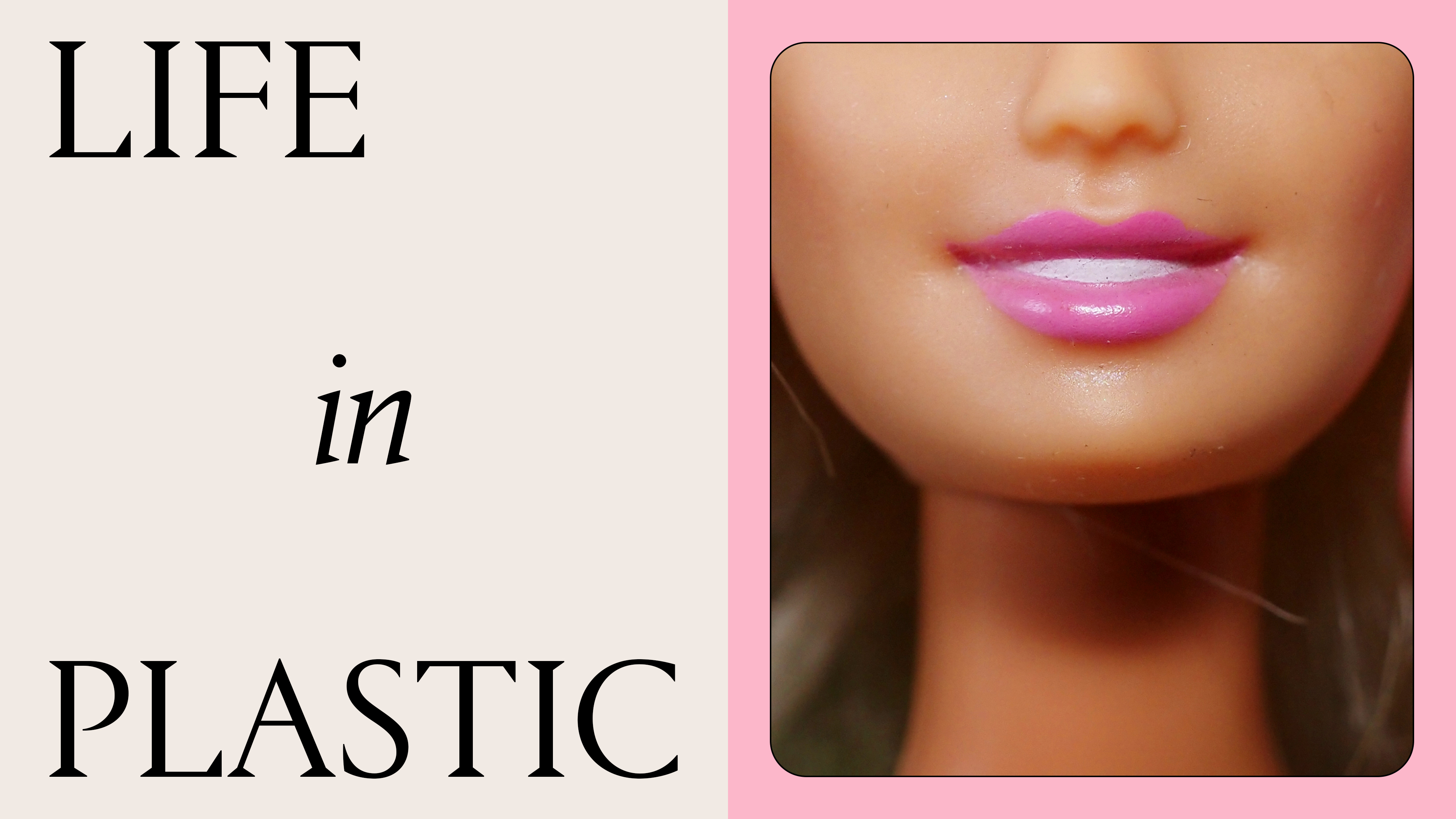

Nothing gets us more excited than talking about a not-so-little tweakment or a nip-tuck procedure. In the spirit of transparency, Marie Claire’s aesthetics column, Life in Plastic, delivers a first-hand peek into what goes on behind the doctor’s door.
As a beauty editor, I've always been fascinated with aesthetic treatments and the latest science—but in a very particular way. I've seen the bad, the good, and the jaw-dropping "Wow, they won the genetic lottery" kind of work. The best results, to me, are the invisible ones: a jawline that's defined but not chiseled; lips that are full but don't scream injections; a rhinoplasty that enhances without totally erasing the quirks that make a face interesting (I'm Italian, and yes, I'm slightly attached to my bump). Teeth, though, were the one area that had me curious enough to get in the chair myself.
Health-wise, my teeth were perfect—no cavities, no crowding, no bite issues. But fluorosis (a developmental condition that causes discoloration) had left me with patchy white spots and a yellow undertone that progressively worsened the farther back my teeth went in my mouth. It was resistant to whitening, and every time I saw myself in a photo or caught a glimpse in the mirror, I'd think: If they were only a tiny bit more even in color and symmetrical in shape.
I'd be lying if I said working in this industry doesn't make me crave that little something extra—it does—but I always approach aesthetic treatments with a filter: Would I be doing this for me, not for anyone else? Veneers, I realized, felt like something that could give me the subtle shift I couldn't stop thinking about.
Thus, my homework began, and I did what all investigative beauty editors do: I practice-hopped across New York City, consulting with the who's who of cosmetic dentistry, obsessively asking questions, scrutinizing mock-ups, and comparing every tooth shape and color offered. Each time, something was missing. I wanted natural—truly natural—and I was terrified no one would get it. I almost walked away from the idea altogether.
Then I met Michael Apa, DDS. I'd seen his work and heard the stories—dentists around the country apparently take any opportunity to study his veneers up close. He's the man behind some of the most famous smiles in the world. And when the opportunity came to become his patient, I took the plunge.
Dr. Apa veneered 10 of my upper teeth and six of my lowers, and it was a journey. Keep scrolling for all the details on my veneer experience.
Get exclusive access to fashion and beauty trends, hot-off-the-press celebrity news, and more.
My Vision
Did I need veneers? Absolutely not. But did I want them? Oh, yes. And I wanted them to look like nothing had been done at all. That's my rule with aesthetic treatments: subtle, natural, almost imperceptible. Botox? Fine if it didn't freeze my face mid-laugh. Filler? Great if I don't look overdone. Teeth, though, were a new territory.
TikTok didn't help. My feed was a loop of horror stories: filed-down stumps à la "Turkey Teeth" (Editor's note: an unfair generalization about the country), teeth ruined beyond repair, or smiles so blindingly white they looked like Chiclets. The timing couldn't have been worse; just as I was booking consultations, huge influencers were fanning the flames.
I had healthy teeth, which meant the perfect canvas. I wasn't chasing anything dramatic, just a subtle tweak to refine what was already there. But wanting something to look like nothing is its own kind of high stakes. This was no small thing; I veneered most of my teeth. That's the paradox of aesthetics: sometimes the smallest, most precise changes make the biggest impact. And often, they're harder to pull off than a total overhaul.
So, when I sat in the chair, I kept thinking, 'My teeth are fine.' Truly fine. But Dr. Apa could make them look like I'd been born with a smile that most people dream of. Not flashy and definitely not overdone. Just better.
My Veneer Consultation
I walked into Dr. Apa's Upper East Side office, and it immediately felt luxe, exactly what you'd expect from a top-tier dental practice. The consultation itself was meticulous: full X-rays, scans, and molds. Once that was done and my entire mouth had been measured and photographed, it was time for Dr. Apa to evaluate everything and talk through what was possible.
I told him what I wanted: natural, subtle, nothing that would make my smile look "done." I explained the patchy spots from fluroisis, the stubborn yellow undertone, and the asymmetry that had been bothering me for years. Even though I had a vision, I made it clear I wanted to trust the details to him.
As we talked, Dr. Apa explained that designing a smile goes far beyond teeth alone. "It's a facial aesthetic design. I don't just design teeth; I design smiles that live within the architecture of the face. We look at proportions, skin tone, lip movement, personality, and even lifestyle," he says. Then, he pointed out something I'd never noticed: a slight canthal tilt, or a smile that is slanted—so subtle most people would overlook it—but stressed that every fraction of a millimeter mattered. If it wasn't planned precisely, my bite and long-term function could be compromised. "A new smile can lift the lower third of your face, add support to lips and cheeks, and restore proportions that make you look younger," he added.
After we chit-chatted about goals, I toured the in-house lab, where master ceramists handcraft and hand-paint each tooth. Seeing real examples of Dr. Apa's past work was what really sealed my trust—it's one thing to hear about a reputation, another to see the results in person. We mapped out the full process: prep, initial post-op, placement, final post-op, and a hygiene visit. In all, just about three weeks from start to finish. I left the office excited and genuinely ready.
For the practical questions, I pressed Dr. Apa too: Would veneers make my teeth more sensitive? (No, not if they're done properly.) Would they cause bad breath? (Only if they were poorly fitted and not cared for.) Would they affect speech? (Again, only if badly designed.) The short answer to all of it was the same: when veneers are done right, they shouldn't compromise your life.
Veneer Prep Day
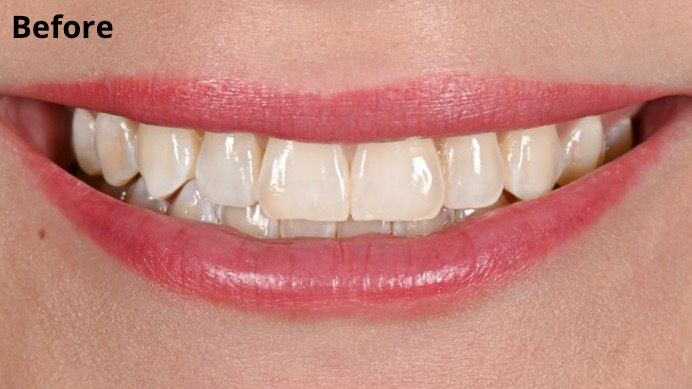
A photo of Siena's teeth before veneers.
The prep appointment was four hours long, but it didn't feel nearly as intimidating as it sounds. In true Apa fashion, the setup was luxe: a Smart TV on the ceiling (I went with Sex and the City, always an easy watch), noise-canceling headphones that totally drowned out any drilling, and even the option of THC or laughing gas to take the edge off. I opted for laughing gas—it was all I needed to put me in La La Land. By the time the numbing set in and a cozy blanket was tucked around me, I felt more like I was at a spa than about to have my teeth filed.
Still, this was the serious part. Prepping teeth for veneers is where precision really matters. As Dr. Apa explained, people often ask how much he has to "shave down" a tooth—likely imagining shark-like results. "Wording that I don't like, by the way," he tells me. The answer is always the same: "just the right amount." That could mean almost no filing if the veneers are additive, or a bit more if the case is reductive. "My philosophy is always to be as conservative as possible, and the art lies in customizing: every fraction of a millimeter matters. We’re reshaping, not shaving down."
For me, the filing was minimal, enough to achieve a color change. Think of it like gel polish over a natural nail: just enough to let the veneer sit flush against the tooth. My case was reductive, so a tiny bit of filing made all the difference between natural and bulky. Though no-prep methods may be touted as the healthiest way to preserve a natural tooth, in many cases, if they don't meet the requirements perfectly, adding the veneer can create not only aesthetic issues (see: bulkiness) but also functional problems within the mouth.
This is also when the temporary smile goes in. Custom molds were made during consult, and a set of temps is placed while the ceramist crafts the final veneers. Seeing them for the first time is a preview—it's plastic, yes, but functional and surprisingly real. Dr. Apa shaped mine personally, and honestly, I could've been happy right then if it weren't for the fact that temporaries are weaker than the real thing.
For most of the four hours, Bea, his wonderful assistant, and Dr. Apa worked seamlessly—alternating between scans, molds, and shaping. The actual filing of the teeth only took 15 minutes on each side. When I finally got up, I looked...well, rough. Totally numb to the point where I couldn't sip water without it falling out, but I can say for certain that I didn't feel nearly as bad as I looked. Instead of the pain I'd been bracing for, I went home and crashed, napping most of the afternoon. By the next morning, I was a tiny bit sensitive, but far less sore than I'd expected.
Veneer Placement Day
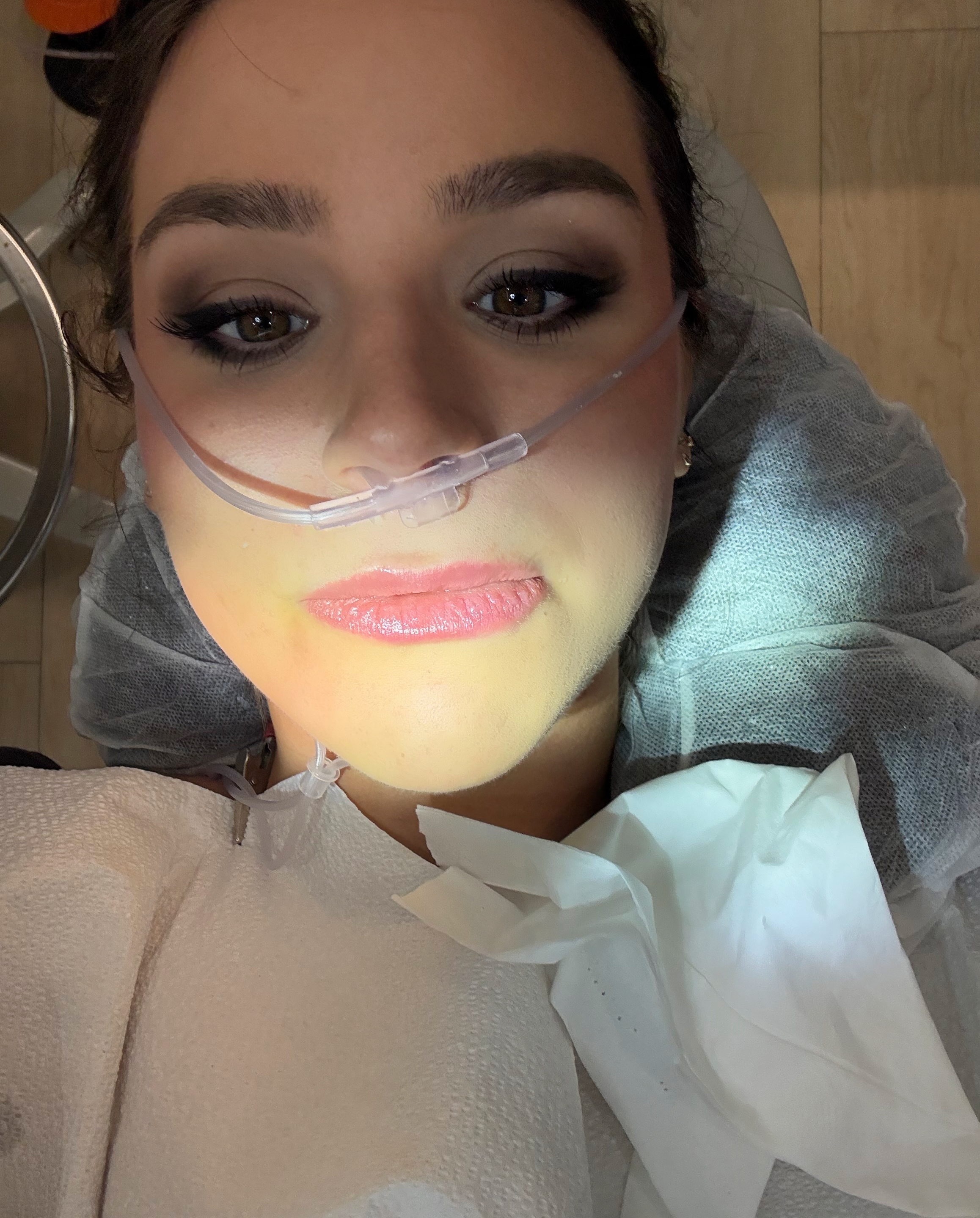
Siena laying *very* comfortably post-laughing gas.
By the time placement day rolled around, I was over my temps. Nearly three weeks of careful chewing and constant babying had me ready for the real thing. Only one popped off in the back (a tortilla chip got the better of me), but I was beyond ready to have a fully functioning mouth again.
This appointment lasted about four hours, and it was during this time that I really got to see the craftsmanship in action. Snuggled under a blanket with noise-canceling headphones and another episode of Sex and the City playing on the ceiling, my temps were removed. Each hand-sculpted, hand-painted veneer was tried on one by one, though I hadn't actually seen them yet. Dr. Apa and Joao Maciel, the ceramist behind my teeth, evaluated every detail and took them back to the lab to make final adjustments before placing them permanently.
Once my teeth were cleaned and prepped, the bonding cement was applied. The team warned me that some patients experience bonding sensitivity as the cement sets. "It's very temporary," Dr. Apa reassured me, "only about six hours." Only about half of patients ever feel it, and I was one of them, but just in a single tooth.
About an hour after arriving home, the nerve pain hit. I had hoped to skip it, but sure enough, the sensitivity appeared right on schedule. I didn't believe the team when they promised it would disappear at six hours on the dot—but they were right. By the six-hour mark, it was gone entirely. I napped in and out, finally falling fully asleep, and the discomfort was mild enough that the prescribed painkillers were more precaution than necessity.
Post-Procedure
Once the numbing wore off, I finally got to see my teeth clearly. I was in complete and utter shock. I had the perfect smile, but somehow it looked so real. The translucency, especially, was a testament to artistry at its finest. Even the subtle gray shadows I noticed between my teeth that night—a temporary aftereffect from the gumline sitting under the temps—disappeared completely by morning.
My last visit was a wrap-up: a 90-minute appointment where they fine-tuned my bite, took final records, photographed my new teeth, and scanned me for a nightguard. Every fraction of a millimeter mattered, Dr. Apa reminded me again, and this was the moment to make those tiny adjustments. Seeing how carefully every measurement was done made me appreciate that it wasn't just cosmetic; it was also equally about function.
When the final set was fully in place, my bite was smooth and my smile perfectly aligned.
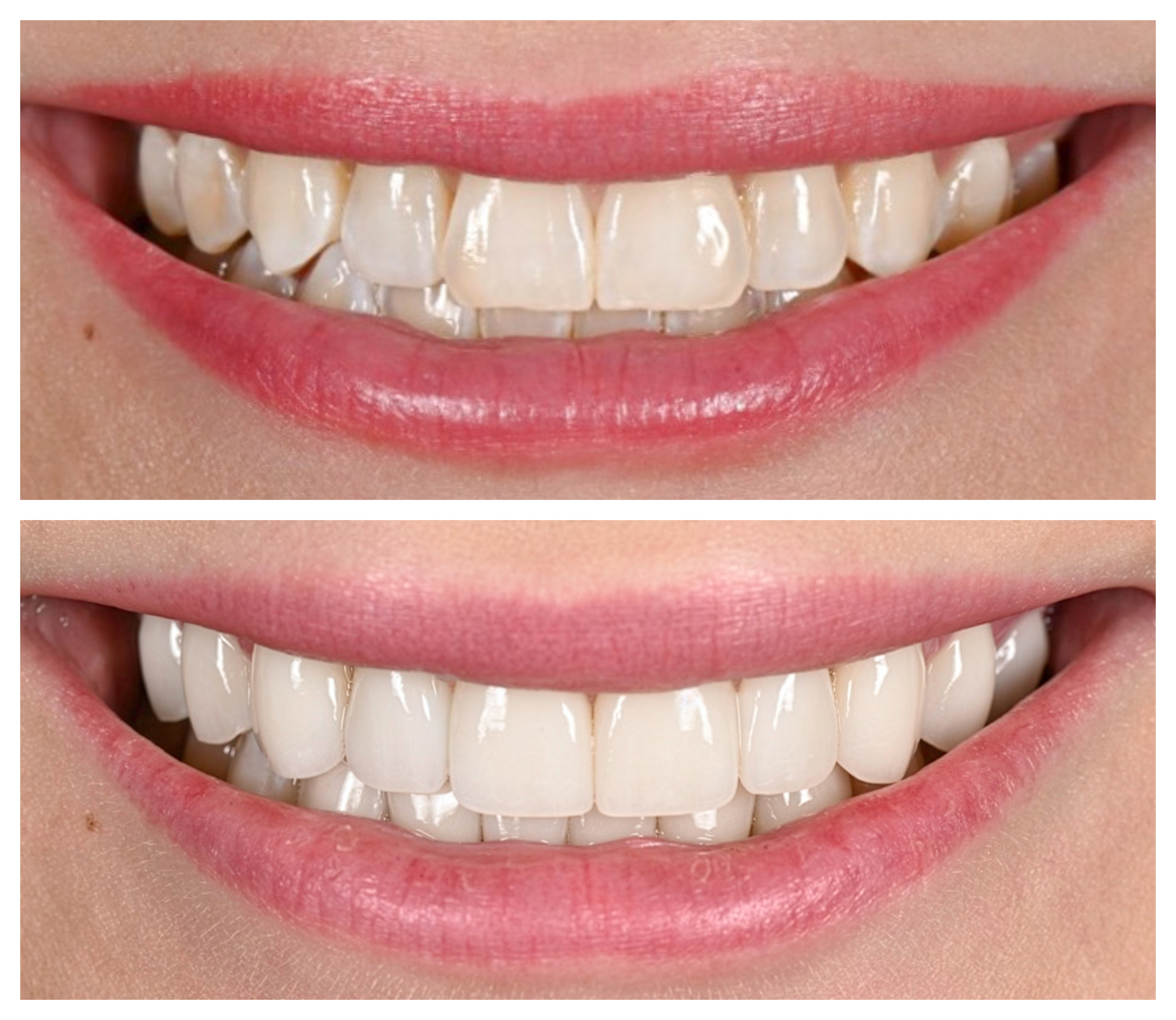
Siena's teeth before and after veneers.
My Veneers Takeaway
It's been a few weeks since my final appointment, and the biggest surprise is how little I think about my teeth now. The patchy spots and yellow tones that once drew my eye and confidence are gone, and now, when I take a photo, I catch myself actually smiling—something my mom would tell you I never did in pictures. As cheesy as it sounds, I didn't realize how much avoiding full smiles had become second nature.
Of course, veneers aren't a small tweak or a casual splurge. They're expensive—up to $5,000 a tooth with dentists like Dr. Apa—and while I was kindly invited to experience the full veneer process firsthand, they last for 15 to 20 years if done properly. That means an ongoing "teeth fund" for life—whether one chips, falls out, or my smile shifts naturally with age.
The real differentiator, though, is who you go to. In the wrong hands, veneers can look bulky, fake, or even damage your bite and oral health. Like all plastic surgery or cosmetic treatments, I fully believe you get what you pay for.
And yes, the type of veneer matters. Composite veneers are completed in a single appointment using resin, explains Dr. Apa, adding that they offer a lower price point but are more prone to staining and chipping. "Porcelain veneers, on the other hand, are crafted in a lab by master ceramists," he says. They have built in layers, with gradient opacity and translucency that reflect light like natural enamel, and they're far more durable. "Porcelain veneers are the gold standard."
At the end of the day, I went in hoping for teeth that still looked like mine, just more straight, symmetrical, and even. I came out with exactly that. And while veneers aren't something to take lightly—they're irreversible—if I could do it all over again with Dr. Apa, I wouldn't hesitate for a second.
Why Trust Marie Claire
For more than 30 years, Marie Claire has been an internationally recognized destination for news, fashion, and beauty trends, investigative packages, and more. When it comes to the products Marie Claire recommends, we take your faith in us seriously. Every product that we feature comes personally recommended by a Marie Claire writer or editor, or by an expert we’ve spoken to firsthand.
Meet the Expert
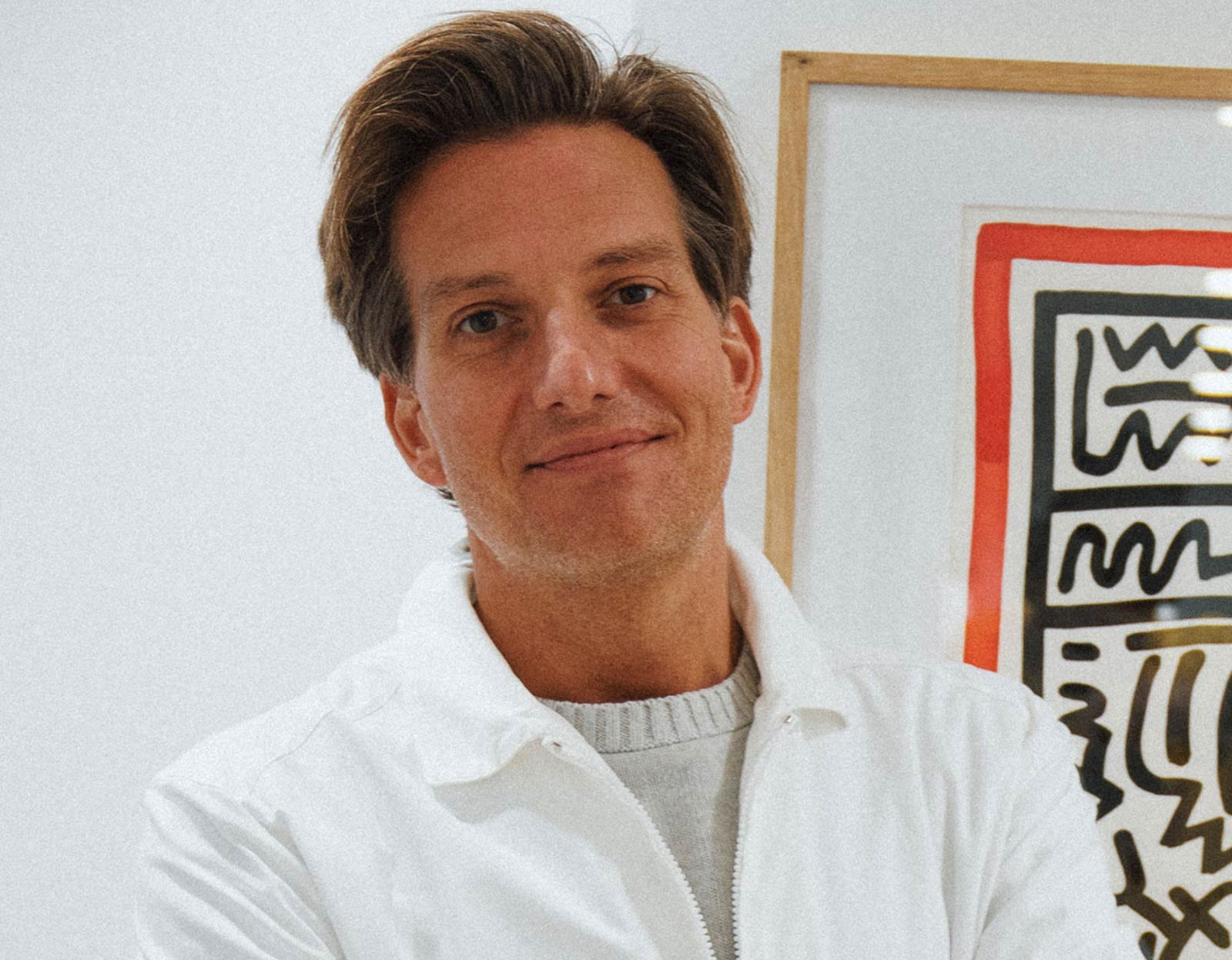
Dr. Michael Apa, DDS, is an internationally renowned dentist specializing in minimally invasive cosmetic dentistry and smile makeovers. He earned recognition as the dentist to the stars, having treated Jennifer Lopez, Kendall and Kylie Jenner, Uma Thurman, Kyle Richards, the Olsen Twins, and more.
Apa is the pioneer of Facial Aesthetic Design (FAD), a new approach to crafting and fitting porcelain veneers that considers a patient’s facial framework when developing a smile treatment plan.
In 2015, Apa opened an office in Dubai, under the name Apa Aesthetic. Los Angeles and Miami followed, in 2019 and 2024, respectively.
Apa is the founder of Apa Beauty, a line of oral care cosmetics, introduced in 2014.
Apa is a member of the American Academy of Cosmetic Dentistry (AACD), American Dental Association (ADA), and Academy of General Dentistry (AGD). He is also on the Editorial Advisory Board for the Journal of Implant and Advanced Clinical Dentistry and on the Leaders Board for Dentistry Today.
Apa is an assistant Clinical Professor at the New York University College of Dentistry in the Aesthetics Department. He is also a senior clinical instructor for Aesthetic Advantage hands on Continuum at The Rosenthal Institute at New York University College of Dentistry

Siena Gagliano is the Beauty Editor at Marie Claire, where she writes and edits reported features, trend stories, and expert-backed shopping roundups. Before joining the team full-time, she was an editor at Cosmopolitan, where she specialized in SEO-first beauty content and commerce strategy. Her bylines have also appeared in Allure, ELLE, Bustle, Well+Good, Popsugar, and Women's Health, covering everything from the best products for brighter, glowier skin to the science behind face mapping. Curious about the behind-the-scenes magazine life and her go-to beauty picks? Follow her on Instagram at @sienagagliano.